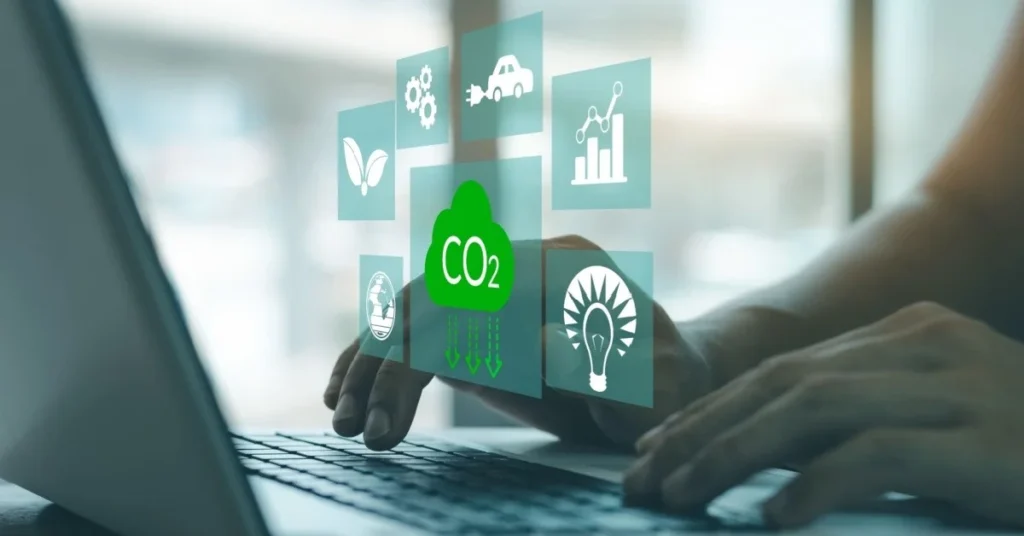In a digital-first world, technology is often seen as clean and intangible. But beneath every app, video call, and data transaction lies a physical infrastructure consuming energy-and generating emissions. From sprawling data centers to device lifecycles and software bloat, the environmental impact of IT is real
As sustainability becomes a boardroom priority, companies are rethinking how their tech ecosystems operate. Welcome to the era of Sustainable IT – a movement focused on reducing the environmental footprint of digital operations without sacrificing innovation or performance.
Why Digital Carbon Footprint Matters
The ICT (Information and Communications Technology) sector is responsible for an estimated 2-4% of global greenhouse gas emissions – on par with the aviation industry. And with the rapid rise of AI, IoT, and cloud services, that number is growing.
Key contributors to digital emissions include:
· Energy-hungry data centers
· Constant device manufacturing and disposal
· Cloud workloads and over-provisioned systems
· Inefficient software development practices
Recognizing these challenges, tech-forward companies are adopting strategies to make IT learner, greener, and smarter.
1. Green Cloud Adoption
Leading organizations are moving workloads to cloud providers with sustainability commitments. Providers like Google Cloud, Microsoft Azure, and AWS are investing heavily in:
· Renewable energy for data centers
· Carbon-intelligent computing
· Real time carbon tracking dashboards for enterprise customers
By migrating to sustainable cloud infrastructure, companies can reduce both their energy usage and emissions – while maintaining performance and scalability.
2. Optimizing Code and Architecture
Software efficiency plays a critical role in reducing digital waste.
· Lightweight, clean code reduces CPU cycles and energy use
· Server less and event-driven architectures only use compute resources when needed
· AI model compression reduces training and inference energy
Green software engineering is no longer just about performance – it’s a sustainability imperative.
3. Device Lifecycle Management
Every smartphone, laptop, and router has a carbon footprint tied to its manufacturing and disposal.
Forward-looking companies are:
· Extending device life through repair and reuse policies
· Using modular hardware for easier upgrades
· Partnering with e-waste recyclers to ensure ethical disposal
· Transitioning to Energy Star-certified and low power hardware
A shift from “refresh cycles” to “circular usage models” is gaining momentum.
4. Smart Data Management
Storing, transferring, and processing massive amount of unused or redundant data burns both storage and energy.
Companies are adopting:
· Data minimization strategies
· Archiving cold data efficiently
· Compressing file sizes
· Using AI to predict and manage storage demand
Less data=lower costs and carbon impact.
5. Measuring and Reporting Digital Emissions
What gets measured gets managed.
Organizations are now using tools like:
· Carbon-aware computing dashboards
· Sustainable IT audit frameworks
· Scope 3 reporting to assess IT-related emissions across the supply chain
By integrating digital sustainability metrics into ESG (Environmental, Social, and Governance) reporting, companies can track progress and make informed decisions.
6. Employee Awareness and Culture Shift
Sustainable IT isn’t just a technical challenge – it’s a culture shift.
Companies are:
· Training teams on eco-conscious coding
· Encouraging green habits
· Making remote work infrastructure more energy efficient
Digital sustainability becomes real when everyone is part of the mission.
Conclusion
Sustainable IT is not about choosing between innovation and responsibility – it’s about enabling both. As organizations build smarter infrastructure, develop cleaner code, and adopt ethical device strategies, they’re not only reducing their environmental impact – they’re future-proofing their operations.
At Temetatech, we believe digital transformation and environmental stewardship must go hand in hand. Our commitment is to help businesses innovate sustainably – because the future we build with technology should be a future we can live in.

